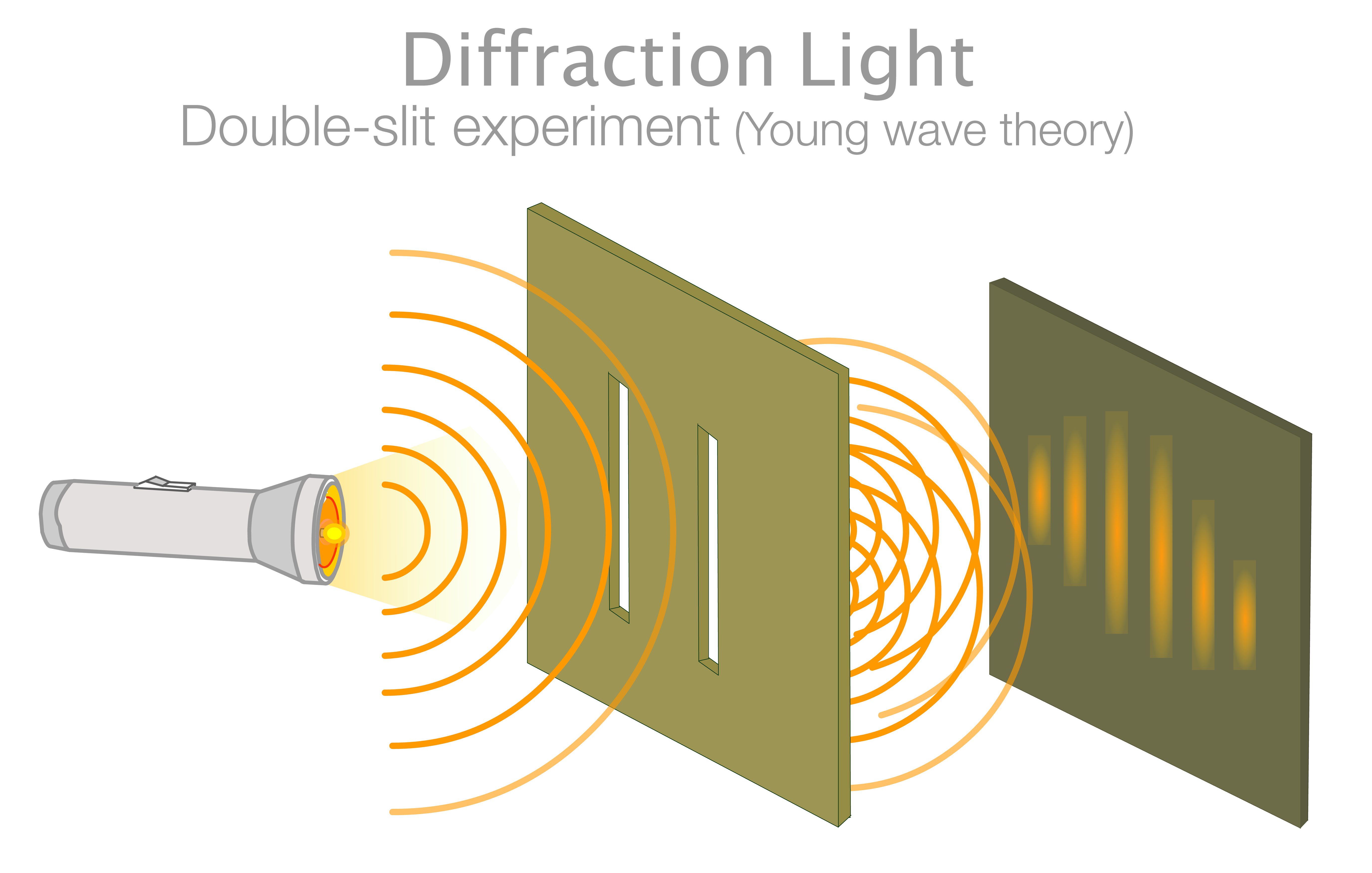We know now that light behaves as both waves and particles. Back in 1801, Thomas Young’s famous double-slit experiment clearly showed light’s wave nature. As light passes through two narrow, close-to-each-other slits, it interacts creating a diffraction pattern. Scientists have long suspected that the same would happen if the double-slit were to occur in time rather than space. Now, they have finally demonstrated it.
This temporal version of the double-slit experiment was far from easy to create. They used a semiconductor common in phone screen manufacturing: Indium tin oxide. When hit by laser pulses this material can suddenly become a mirror. By delivering two quick consecutive pulses at the right time for the right wavelengths of light, the team created a double-slit in time.
“This is a very interesting experiment because it hasn’t been done before, and we weren’t sure whether it was possible. It was very exciting to be able to demonstrate that we can do this double-slit in time,” lead author Romain Tirole, from Imperial College London, told IFLScience.

This is how the double-slit experiment works: To travel through the two slits, the light splits into two waves which interact when they come out the other side of the slits. Where the waves’ peaks meet, they enhance each other, and where a peak and trough meet they cancel each other out, creating striped interference patterns. Image Credit: grayjay/shutterstock.com
Indium tin oxide surprised the team as it reacted much more quickly than they expected. It created these time slits just a few femtoseconds apart, that is 10-15 seconds. To give you an idea of how small that is, it is roughly the same order of magnitude of one second compared to 31 million years.
In the spatial version of the experiment, the interference patterns are created in the angular profile of light. In the time version, the interference affects the frequency of light, literally changing its colors. The team thinks that this is just the beginning of what they might be able to achieve.
“We can think about doing more complicated patterns. So essentially, we’re gaining control over which colors we can generate in light,” Tirole explained to IFLScience.
While the results are brand new, the team is already thinking of the possible applications of this technology, from data encoding to employing time crystals with this approach. Time crystals are not some Doctor Who McGuffins but systems where patterns repeat in time and not in space.
“Our experiment reveals more about the fundamental nature of light while serving as a stepping-stone to creating the ultimate materials that can minutely control light in both space and time,” said lead researcher Professor Riccardo Sapienza in a statement.
“In our field of research, we’ve become really good at controlling the spatial aspect of light. In which direction does it propagate? How does it evolve in space? But time has always been a dimension that has not been accessible to us. But now that we have that extra dimension to manipulate, we can do very interesting things,” Tirole told IFLScience.
The research was published in Nature Physics.
Source Link: Light Interacts With Itself When Squeezed Through "Slits In Time"